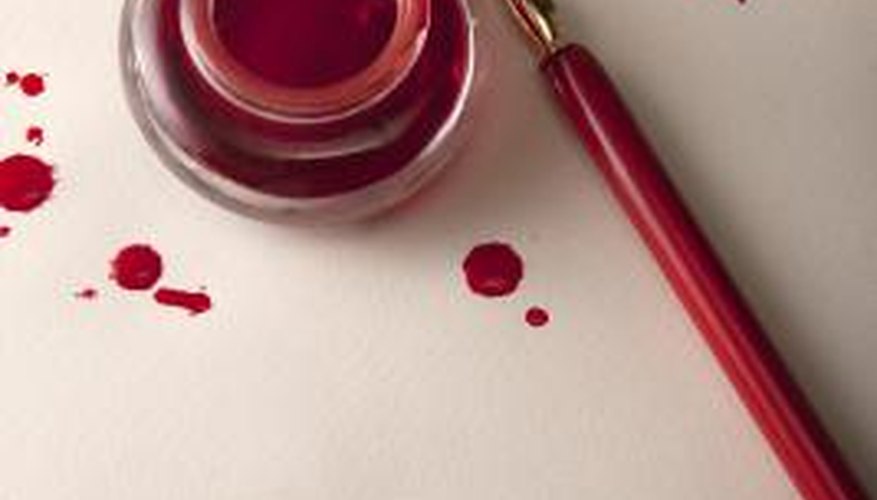Separate ink from water using a process called distillation. This is a process of separating two substances mixed together. Water vaporises at a lower temperature than the ink pigment so if you heat them, the water evaporates, leaving the ink pigment in the flask. Distillation is a simple process but you need special equipment to do it. As the process requires heat, young children and students need adult supervision.
- Separate ink from water using a process called distillation.
- Water vaporises at a lower temperature than the ink pigment so if you heat them, the water evaporates, leaving the ink pigment in the flask.
Set up the apparatus. Add the ink to the round bottomed flask, place the stopper in the top and insert the delivery tube into the hole in the stopper. Add cold water to the beaker next and place the test tube upright in the water, resting it against the side of the beaker. Place the other end of the delivery tube into the test tube so that any liquid in the delivery tube flows into the test tube.
Put on your protective eye wear and light the Bunsen burner. Place it under the round bottomed flask and use a clamp to hold the flask in place so you do not burn yourself.
Watch the ink as it starts to boil. Condensation will form in the delivery tube and, as it cools, turn into liquid. The liquid will trickle down the delivery tube and into the test tube.
Wait for the liquid to boil off, leaving the solid ink sediment at the bottom of the round bottomed flask.
Turn off the Bunsen burner and you will now have separated the ink from the water.
- Put on your protective eye wear and light the Bunsen burner.
- Turn off the Bunsen burner and you will now have separated the ink from the water.
TIP
Use a Liebig condenser to make the process more efficient. This is a piece of equipment that attaches to the delivery tube. Cold water runs through the condenser, cooling the water vapour more quickly than it would at room temperature.
